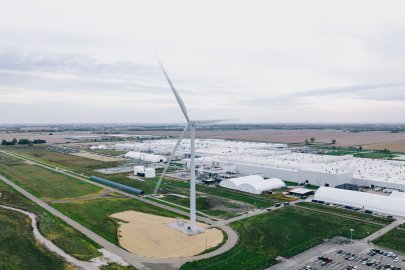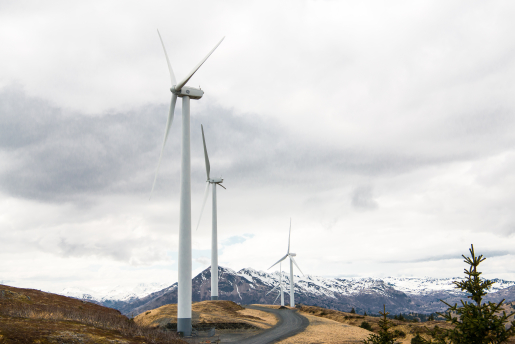
As wind installations continue across the country and offshore wind projects move beyond the planning process, technology costs and wind energy prices continue to fall. These trends and more are detailed in three market reports released by the U.S. Department of Energy:
Wind Technologies Market Report


In 2017, wind energy contributed 6.3% of the nation's electricity supply. In 14 states, it contributed 10% of total electricity generation—and more than 30% in four of those states.
The average capacity of newly installed wind turbines in the United States in 2017 was 2.32 MW, up 8% from the previous year and 224% since 1998–1999. Bigger turbines with longer blades are enhancing wind plant performance. Wind projects built in the past few years have seen capacity factors—a measure of how close a plant is operating to its maximum output—increase by 79% compared to projects that were installed from 1998 to 2001. And after topping out at 7¢/kWh in 2009, the average levelized long-term price from wind power sales agreements has dropped to around 2¢/kWh. You can learn more about the wind market industry in 2017 in Top 4 Trends in the U.S. Wind Market.
Download the 2017 Wind Technologies Market Report.
Distributed Wind Market Report


In total, U.S. wind turbines in distributed applications reached a cumulative installed capacity of 1,076 MW—which came from roughly 81,000 turbines installed across all 50 states, Puerto Rico, the U.S. Virgin Islands, and Guam.
Thirty-five percent of distributed wind projects installed in 2017 were at homes and 25% were agricultural installations. U.S.-based small wind turbine manufacturers accounted for more than $226 million in export sales between 2015 and 2017.
Download the 2017 Distributed Wind Market Report or the Distributed Wind Market Report Fact Sheet.
Distributed Wind Photo Gallery
For more information about the case studies highlighted in this gallery, see the Distributed Wind Photo Gallery page.
Offshore Wind Technologies Market Update


The U.S. offshore wind industry took a leap forward as several commercial-scale projects were selected for state-issued power purchase awards in 2018, while other U.S. states have implemented dedicated procurement and offtake policies during 2017–2018. The U.S. offshore wind development pipeline contains more than 25,000 MW of potential capacity across 13 states.
Researchers are evaluating floating substructure configurations to overcome the significant challenge of building offshore wind turbines in deep waters, where roughly 60% of the U.S. offshore wind resource lies.
Download the 2017 Offshore Wind Technologies Market Update.
Learn More
-
 Wind power capacity in the United States continued to experience strong growth in 2017.
Wind power capacity in the United States continued to experience strong growth in 2017. -
 Brush up on your knowledge of wind! Get the details on a few of the lesser-known wind energy facts.
Brush up on your knowledge of wind! Get the details on a few of the lesser-known wind energy facts. -
 Learn about key facts related to wind turbines used in distributed applications.
Learn about key facts related to wind turbines used in distributed applications. -
 Learn more about efforts to develop America's vast offshore wind resources.
Learn more about efforts to develop America's vast offshore wind resources. -
Capacity is the maximum output of electricity that a generator can produce. Generation is the amount of electricity that is produced over a set time.
Previous Reports

How much do you know about wind energy? Test your knowledge with our wind power quiz!
Learn the basics of how wind turbines operate to produce clean power from an abundant, renewable resource—the wind.


Discover many of the remarkable advances that wind power has made over history.





















